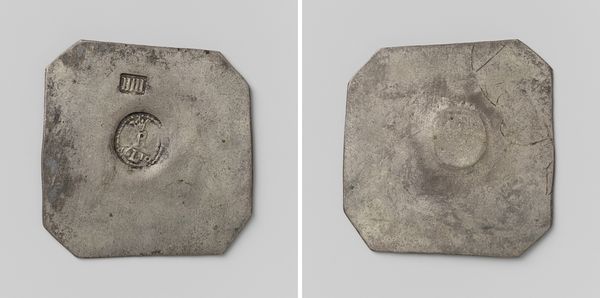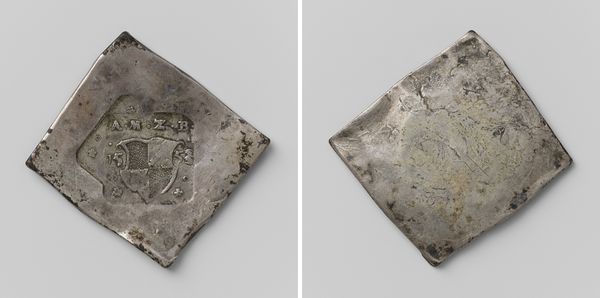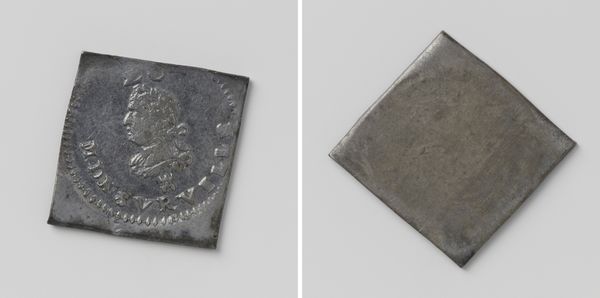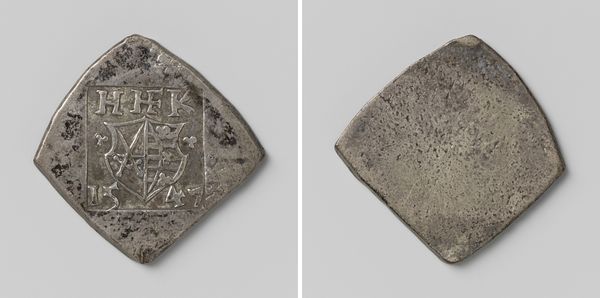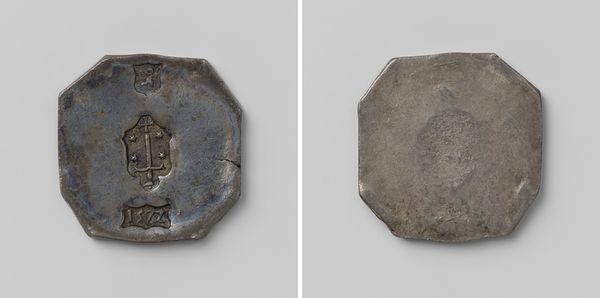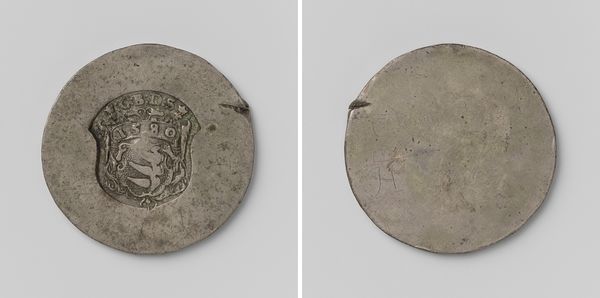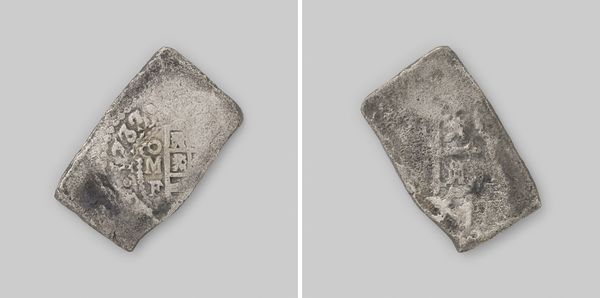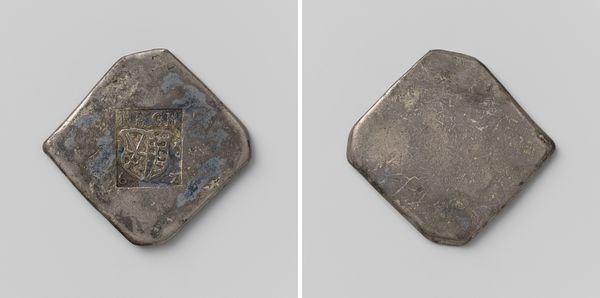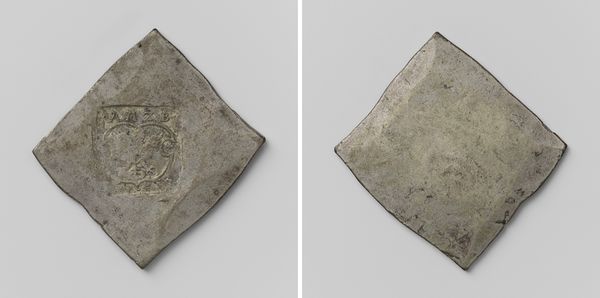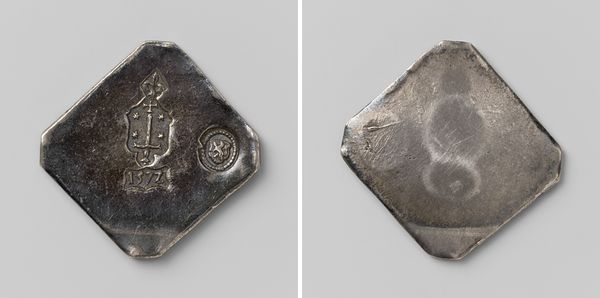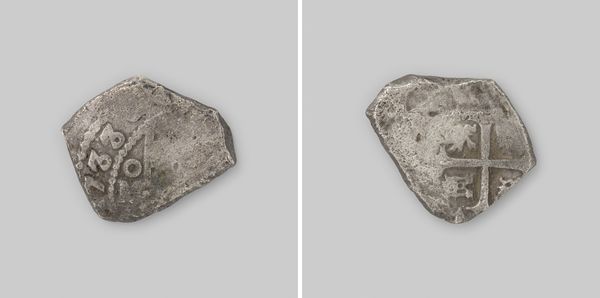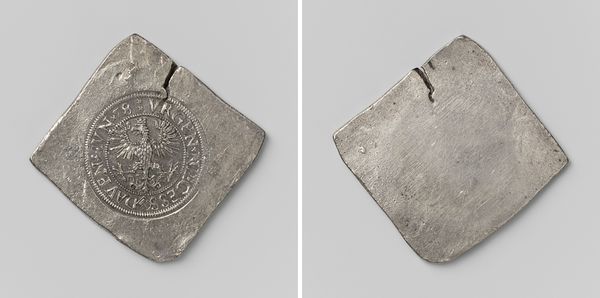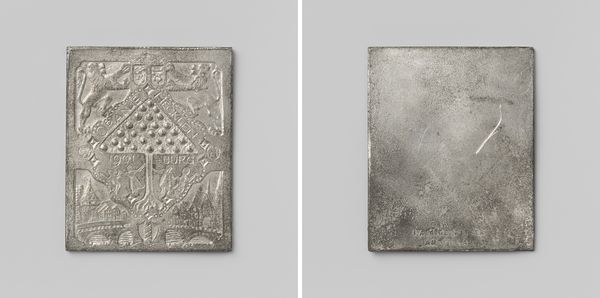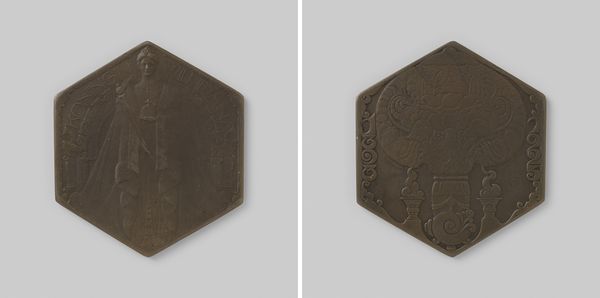
silver, print, relief, sculpture
#
medieval
#
silver
# print
#
sculpture
#
relief
#
sculpture
Dimensions: height 2.9 cm, width 2.8 cm, weight 14.67 gr
Copyright: Rijks Museum: Open Domain
Curator: Looking at this artwork immediately evokes a sense of resilience, doesn't it? The texture is quite rough, with clear signs of handling and age. Editor: Absolutely. What we're seeing are two sides of what's believed to be an emergency coin, part of a set of twelve, originating from Dutch cities, potentially from the year 1572. It is made of silver and presented as a print in relief. Consider the backdrop against which these were produced. Curator: A society embroiled in conflict. These aren't pristine, carefully minted coins, are they? Their shape and the seeming crudeness of the stamp give an impression of a makeshift effort. Editor: Precisely. We're in the early years of the Dutch Revolt against Spanish rule. Cities under siege often resorted to creating their own currency when supplies and resources dwindled. These coins become emblems of resistance and fiscal autonomy in times of extreme stress. Curator: The symbolic weight these coins carry is palpable. The emblems, though worn, likely represented local civic identity and a defiance in the face of a dominating empire. It reminds one that even something as basic as currency can be a declaration of sovereignty. Structurally, though, I notice a certain economy of line—it seems like every possible cut stroke makes sense in representing its values in its symbolic order. Editor: Good point. Form follows function here. The immediate need dictated the design, minimizing any excessive or superfluous details. We see the bare necessities: date and heraldic symbols which are meant to transmit the intended message, not decorative finesse. Curator: And perhaps that raw functionality is what makes it so compelling. It cuts through the formality we often expect from currency and presents a tangible link to a society under duress. When reflecting on its historical importance, one should bear in mind that emergency situations, especially for ordinary people, create unique challenges which require creative answers. This piece can be considered a testament of humanity's persistence even during moments of crisis. Editor: It reminds us how much these seemingly mundane objects were charged with extraordinary meaning. Curator: Precisely; that makes us appreciate them. Editor: A fascinating object to reflect on history.
Comments
rijksmuseum about 2 years ago
⋮
The cities besieged by the Spanish army for having revolted against Spanish rule in the 1570s experienced severe shortages of virtually everything, including money to pay the soldiers. Emergency money was therefore minted. Gold, silver, paper: anything in the cities under siege could be used as temporary currency.
Join the conversation
Join millions of artists and users on Artera today and experience the ultimate creative platform.
